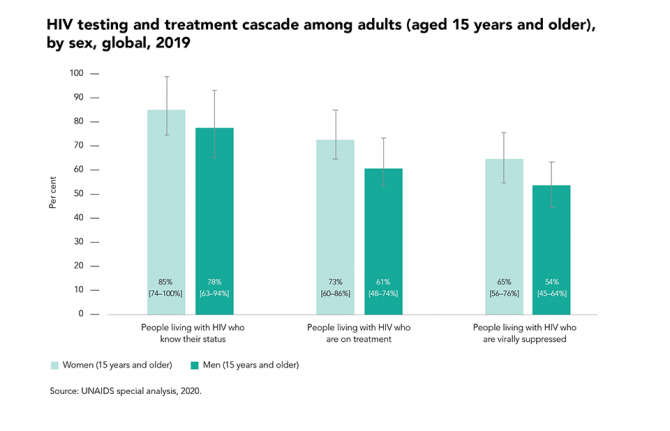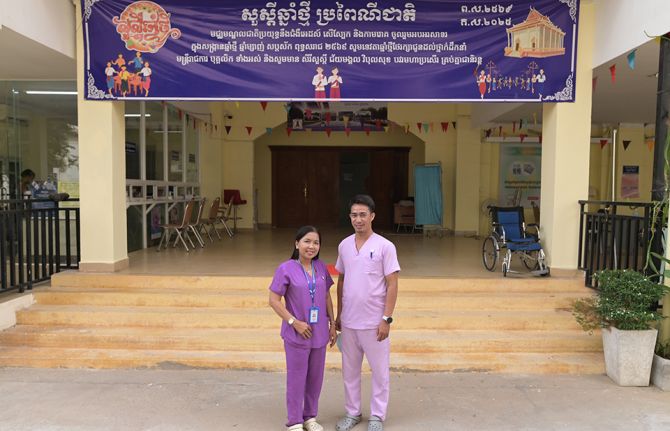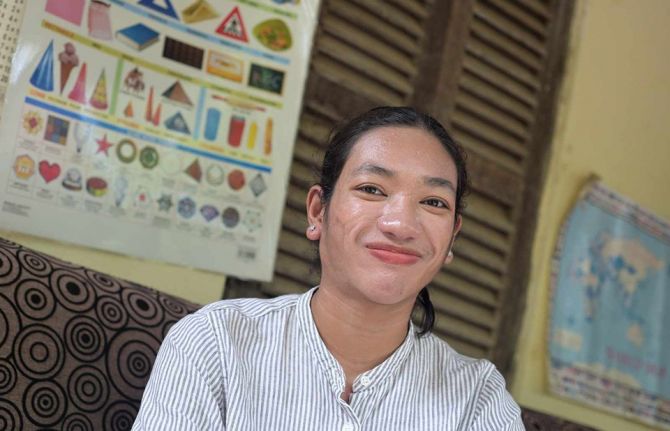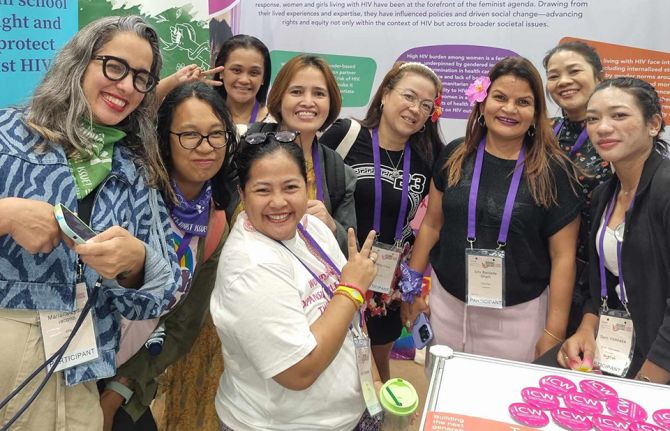

Update
Women living with HIV are more likely to access HIV testing and treatment
05 October 2020
05 October 2020 05 October 2020In nearly all regions, women living with HIV are more likely to access HIV testing and antiretroviral therapy than men, in part due to better health-seeking behaviour among women and the existence of HIV-related services designed specifically to reach women (such as services to prevent mother-to-child HIV transmission that are provided during antenatal care).
In 2019, treatment coverage globally was 12 percentage points higher among women living with HIV than among men living with HIV, and viral suppression was 10 percentage points higher. This treatment gap among men living with HIV contributes to the higher number of new HIV infections among women in sub-Saharan Africa. Recent longitudinal studies have shown how closing these gaps accelerates declines in the incidence of HIV among women, especially young women.



